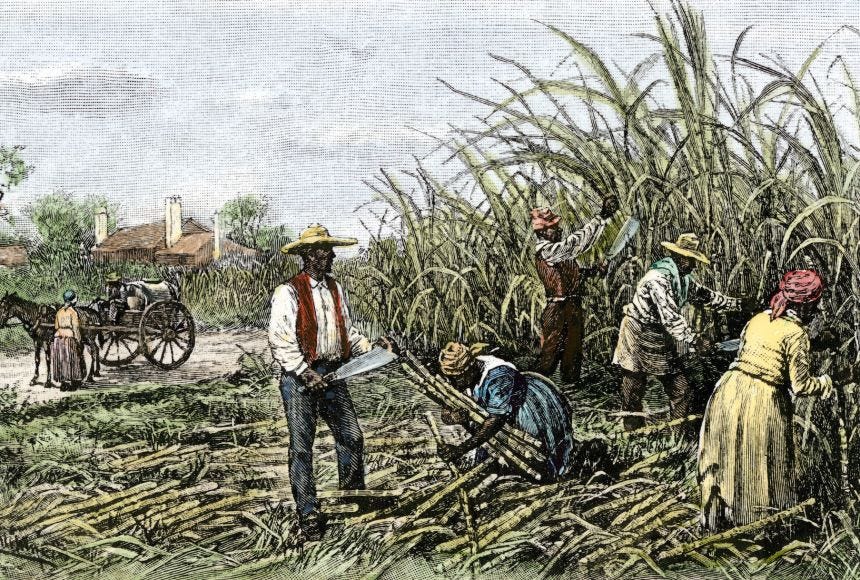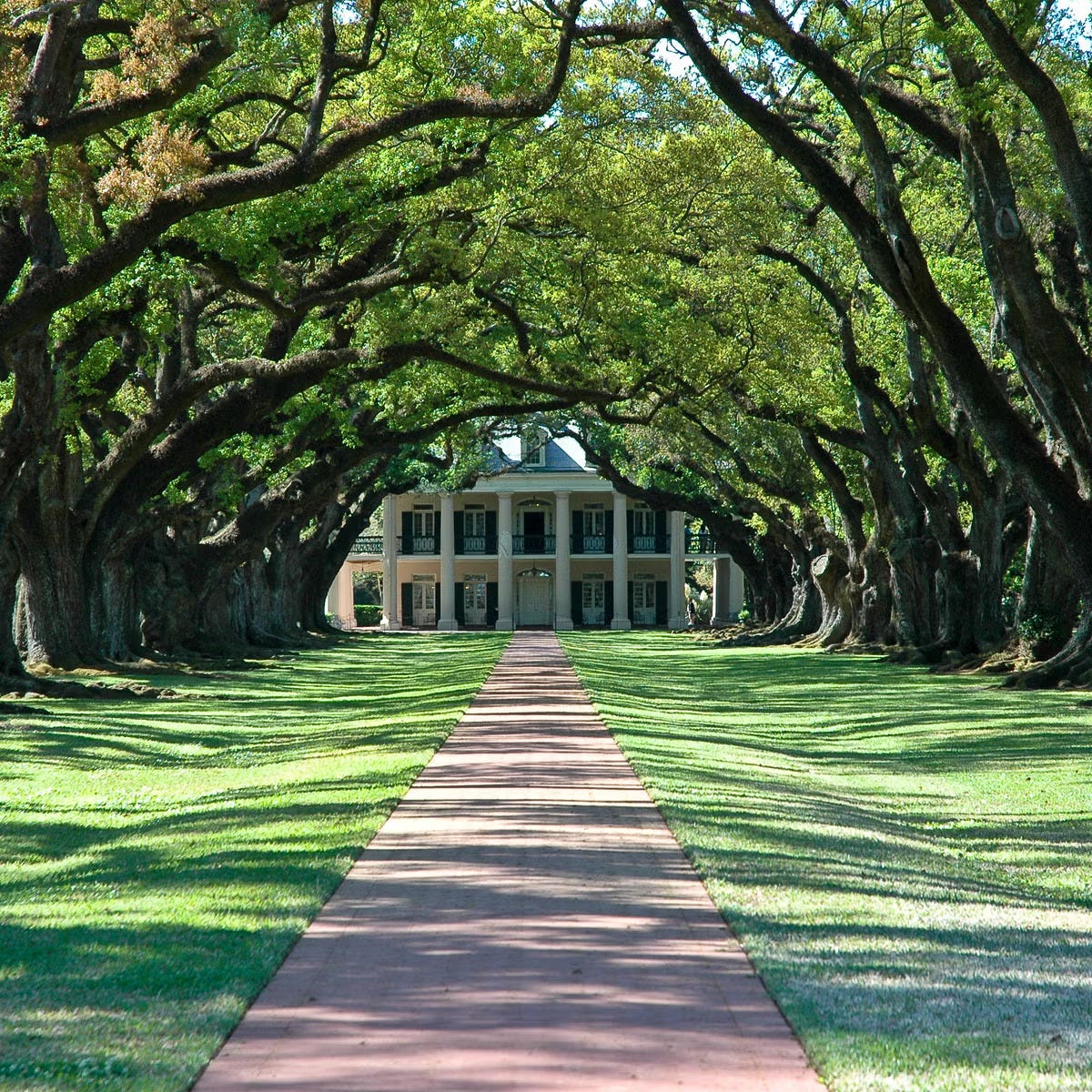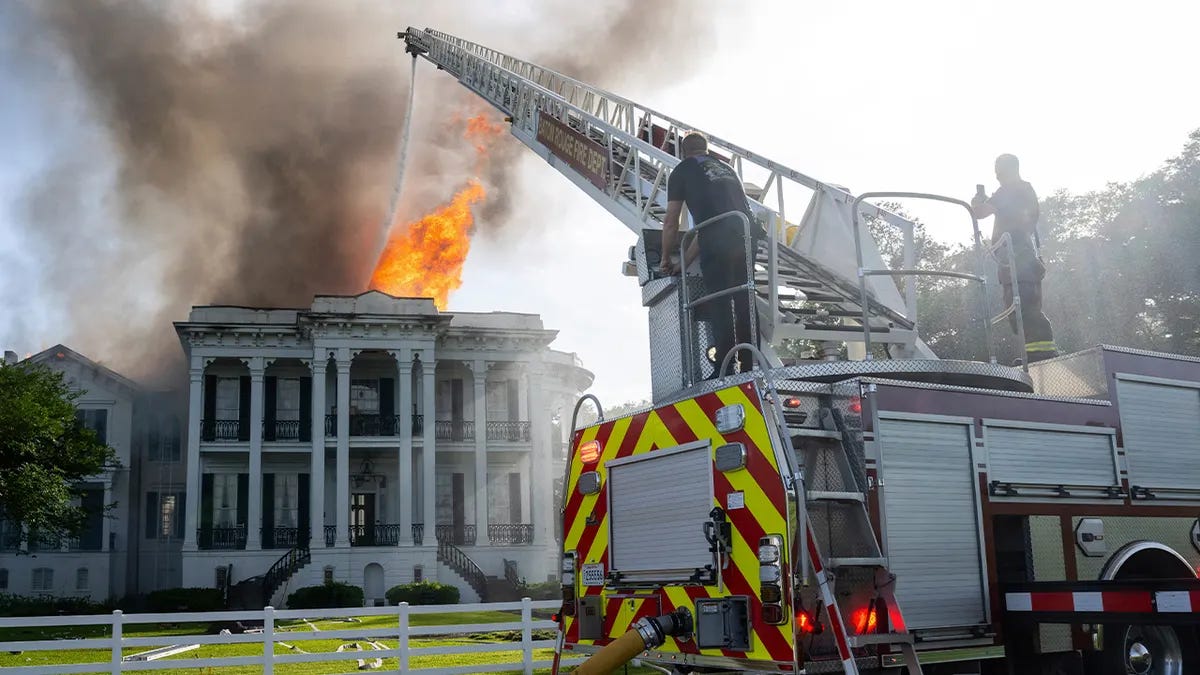On May 15, 2025, flames devoured Louisiana's iconic Nottoway Plantation, reducing to ashes one of America's largest and most extravagant antebellum mansions. Behind its stately columns, gleaming marble halls, and elegant chandeliers lay a hidden truth, one deeply intertwined with the brutal realities of American slavery.
Today, we dive beneath the plantation’s glamorous exterior, exposing a history often overlooked. What were the stories and lives that built such beauty, only to remain concealed beneath the grandeur?
How Did Sugar Shape the Antebellum Economy?
To fully grasp the history behind Nottoway Plantation, we must turn back the clock to the Antebellum era, spanning from the War of 1812 until the onset of the Civil War in 1861. During this era, global demand skyrocketed for lucrative southern cash crops like cotton, rice, tobacco, and especially sugar. Southern plantation owners, eager for wealth and influence, capitalized quickly, expanding massive plantations through violence and forced labor.
Louisiana had perfect conditions for sugarcane, earned the moniker of America's "Sugar Bowl." Yet beneath this innocent-sounding nickname lay unimaginable cruelty. Sugar production demanded exhausting labor, nonstop workdays in grueling heat with constant threats of injury and death from dangerous machinery. Sugar plantations were notoriously harsh, resulting in significantly reduced life expectancy for enslaved people, numbers planters dismissed as merely the cost of doing business.
Opulence Built on Enslavement?
Within the brutal economy of the American South stood Nottoway Plantation—a prominent symbol of immense wealth built upon human suffering. In 1859, John Randolph commissioned the construction of the massive Nottoway Plantation.
The plantation spanned over 6,200 acres, of which Randolph dedicated 1,200 acres solely to the cultivation of sugarcane. Determined to showcase his wealth and social influence, Randolph hired renowned architect Henry Howard to design and build an extravagant mansion.
This grand residence, designed to project an image of elite Southern power, featured 64 lavish rooms, 365 windows and doors, and 22 towering white columns—an ostentatious expression of luxury and excess. Intent on ensuring his home's status remained unmatched, Randolph even ordered Howard's original architectural plans destroyed after completion.
But beneath every gleaming marble floor or sculpted cypress wall stone lay the sweat, suffering, and sorrow of enslaved 155 enslaved Black Folks, forced to work, live, and die on the grounds.
What Was Daily Life As an Enslaved Person at Nottoway?
At Nottoway, enslaved workers rose each day before dawn, laboring under Louisiana’s unforgiving sun. Overseers ensured relentless productivity, enforcing quotas with threats and acts of horrific violence. Families lived perpetually haunted by the threat of separation spouses, parents, and children could, at any moment, be sold off and separated forever. Every aspect of their lives—their food, rest, and interactions was controlled, their humanity stripped away to turn their lives into profit for Randolph.
What Happened to Nottoway Plantation Post-Civil War?
When the Civil War erupted in 1861, plantations like Nottoway faced sudden uncertainty. Across the South, freedom for enslaved African Americans moved from an abstract hope to reality, forcing plantation owners to grapple with economic upheaval. Nottoway survived the war seemingly unscarred, bearing only minor damage.
Yet, beneath this intact exterior, Randolph’s economic security had been shattered. With slavery’s abolition, longstanding economic structures collapsed, reducing Randolph’s thousands of cultivated acres to just 800. Planters, desperate to maintain their wealth, developed exploitative systems—most notoriously sharecropping. Described as a "fair" tactic, sharecropping instead plunged Black workers into perpetual poverty, replicating slavery under a new name.
How Did Plantations Become Symbols of Southern Fantasy?
As decades passed, a shocking cultural shift took place. Rather than confronting the painful truths of Nottoway’s past, white Southerners began recasting plantations as symbols of charm and grace. Postcards, brochures, and romantic narratives deliberately omitted slavery’s cruelty, selling a nostalgia-based image. Nottoway transformed into a tourist attraction, celebrated for weddings and luxury vacations, sanitized of the traumatic reality behind its creation.
Nottoway is Burning?
Then, suddenly, history took a dramatic turn on May 15, 2025. An unnoticed fire started inside a second-floor bedroom, spreading rapidly, engulfing room after room. Despite firefighting efforts, by morning Nottoway Plantation was utterly destroyed, reduced to mere smoldering remains.
This fiery destruction shook the community. Some mourned the architectural loss, while others sadly reflected on the disappearance of historic treasures. But to many like me, the blaze carried deeper, symbolic meaning—a cleansing act that stripped away decades of romanticized myth.
The flames that destroyed Nottoway’s elegant columns and polished floors did not erase history; instead, they illuminated truths long overshadowed by grandeur. By openly confronting the plantation’s tragic realities, we ensure the resilience, humanity, and legacies of our ancestors remain unforgotten, proudly surviving even after the mansion’s glowing ashes cool.
You can learn about more about Black History at my YouTube channel and Podcast!

















Share this post